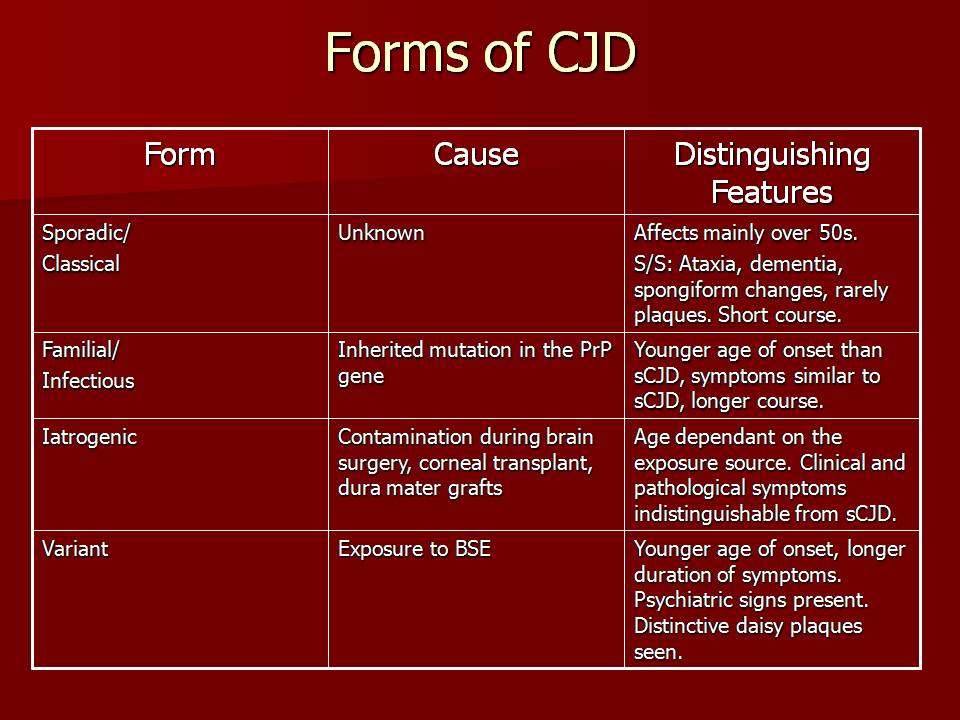Reference




OpenAI's Answer
Creutzfeldt–Jakob Disease (CJD) exists in several forms, each with its own characteristics and modes of transmission. The main types of CJD include:
-
Sporadic CJD (sCJD):
- Prevalence: This is the most common form, accounting for about 85% of cases.
- Cause: It occurs for unknown reasons, with no identifiable origin.
- Age of Onset: Usually affects people around 60 years old.
- Symptoms: Rapidly progressive dementia, along with myoclonus (muscle jerks).
-
Familial or Inherited CJD (fCJD):
- Prevalence: Constitutes about 10-15% of CJD cases.
- Cause: Caused by inherited mutations in the PRNP gene, which codes for the prion protein.
- Symptoms: Similar to sporadic CJD, but patients may have a family history of the disease.
- Age of Onset: Often seen in younger individuals compared to sporadic CJD.
-
Iatrogenic CJD (iCJD):
- Prevalence: Extremely rare, less than 1% of cases.
- Cause: Results from exposure to infected nervous system tissue during medical procedures, such as contaminated surgical instruments or human growth hormone.
- Symptoms: Similar to sporadic CJD, including rapidly progressive dementia and motor symptoms.
-
Variant CJD (vCJD):
- Prevalence: Very rare, but has gained public attention due to links to Bovine Spongiform Encephalopathy (BSE), commonly known as "mad cow disease".
- Cause: Acquired through consumption of beef infected with BSE.
- Symptoms: Unlike other forms, vCJD affects younger individuals (average age of onset in late 20s) and features more psychiatric symptoms initially, such as depression and anxiety, followed by neurological dysfunction.
-
Acquired CJD (including vCJD and iCJD):
- This includes any form of CJD acquired through external means, such as ingestion of prion-infected food (vCJD) or medical contamination (iCJD).
For more detailed information, you can refer to these resources:
Here is an image summarizing the different forms of CJD:

Follow Up
Related
Which organizations have provided guidelines or conducted surveillance on Creutzfeldt-Jakob disease
How did the identification of new variant Creutzfeldt–Jakob disease impact TSE research?
How were prions in classic Creutzfeldt-Jakob disease cases transmitted iatrogenically before 1976?
How are prion diseases such as Creutzfeldt-Jakob disease transmitted to humans?